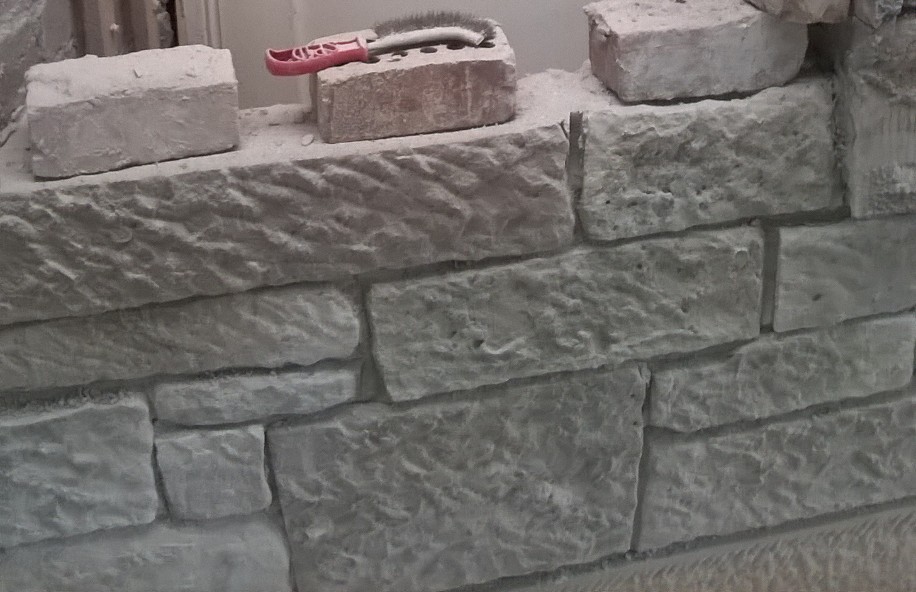Masonry
A mason is a person who builds with, or dresses, hard units such as brick, stone or block. The term ‘masonry’ can be used to describe the trade of masons, work done by them, or the actual, stonework, brickwork or blockwork that they construct.
Masonry is generally used to form the walls and other solid elements of buildings and structures such as bridges, tunnels and so on. It may be load bearing, forming an integral part of the structure, or non-load bearing, such as a partition wall or cladding.
Generally the size of the units is suitable for being laid by one person, although, increasingly, masonry is delivered to site in prefabricated panels that are craned into position. Masonry is often formed by laying a number of interlocking units, bound together by mortar, however, dry set masonry relies on the friction between the units to prevent movement, and does not require mortar.
Masonry is very strong in compression, but less effective at resisting lateral loading or tension forces. Additional strength can be achieved by increasing the thickness of the masonry, by the addition of piers or buttresses, or by the incorporation of reinforcement.
Masonry walls may have complex constructions to optimise performance, that may include hollow sections in the masonry itself, a cavity between internal and external leaves of the wall, insulation, a vapour barrier and internal and external finishes and decoration.
However, generally masonry does not require finishing and decorating and is very durable, so is relatively inexpensive to maintain and repair. It tends to offer good thermal mass, high acoustic insulation and good resistance to fire.
Masonry tends to be heavy, and so requires strong foundations. It can be prone to frost damage, staining and disintegration of joints.
To find out about the cleaning of masonry, see How to clean masonry.
NBS categorise masonry as:
| F10 | Brick / Block walling |
| F11 | Glass block walling |
| F20 | Natural stone rubble walling |
| F21 | Natural stone / ashlar walling / dressings |
| F22 | Cast stone ashlar walling / dressings |
| F30 | Accessories / Sundry items for brick / block / stone walling |
| F31 | Precast concrete sills / lintels / copings / features |
| F42 | Straw bale walling systems |
[edit] Related articles on Designing Buildings
- Bond stone.
- Brick.
- Building with structural stone.
- Cement mortar.
- Choosing stone.
- Defects in brickwork.
- Defects in stonework.
- Finding stone to conserve historic buildings.
- Flint.
- Freestone.
- How to clean masonry.
- Joggle.
- Kentish ragstone.
- Limestone for building.
- Masonry chimney.
- Modern stonemasonry.
- Mortar.
- Reaching new heights in the design of fire-safe tall buildings.
- Rendering.
- Rubble masonry.
- Sneck.
- Sourcing stone to repair Exeter Cathedral.
- Stone dressing.
- Sustainable stone.
- Terracotta.
- The Stone Restoration Handbook.
- Types of stone.
- Unfired clay masonry: An introduction to low-impact building materials.
- Weep hole.
[edit] External references
Featured articles and news
Professional practical experience for Architects in training
The long process to transform the nature of education and professional practical experience in the Architecture profession following recent reports.
A people-first approach to retrofit
Moving away from the destructive paradigm of fabric-first.
International Electrician Day, 10 June 2025
Celebrating the role of electrical engineers from André-Marie Amperè, today and for the future.
New guide for clients launched at Houses of Parliament
'There has never been a more important time for clients to step up and ...ask the right questions'
The impact of recycled slate tiles
Innovation across the decades.
EPC changes for existing buildings
Changes and their context as the new RdSAP methodology comes into use from 15 June.
Skills England publishes Sector skills needs assessments
Priority areas relating to the built environment highlighted and described in brief.
BSRIA HVAC Market Watch - May 2025 Edition
Heat Pump Market Outlook: Policy, Performance & Refrigerant Trends for 2025–2028.
Committing to EDI in construction with CIOB
Built Environment professional bodies deepen commitment to EDI with two new signatories: CIAT and CICES.
Government Grenfell progress report at a glance
Line by line recomendation overview, with links to more details.
An engaging and lively review of his professional life.
Sustainable heating for listed buildings
A problem that needs to be approached intelligently.
50th Golden anniversary ECA Edmundson apprentice award
Deadline for entries has been extended to Friday 27 June, so don't miss out!
CIAT at the London Festival of Architecture
Designing for Everyone: Breaking Barriers in Inclusive Architecture.
Mixed reactions to apprenticeship and skills reform 2025
A 'welcome shift' for some and a 'backwards step' for others.























Comments